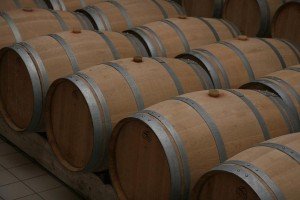Top Four Reasons to Travel to Bordeaux!
December 6, 2024
Bordeaux is well known for being the wine capital of the world, and with good reason. Bordeaux produces at least 400 million liters of -…
Read This Post The region of the Languedoc is often overlooked in favor of it’s neighbor, Provence. But there’s many reasons to visit this off-the-beaten path region, and not just because tourists don’t typically flock here. For starters, there’s the beautiful landscape; the Languedoc borders the Mediterranean Sea as well as Spain, and goes up to the Montagne Noire (the Black Mountains). Cathar castles dot the countryside, as do Roman ruins that date back to 3000 BC. The locals also refer to part of the countryside as ‘the garrigue,’ which are rocky outcrops with pines and scrub oak.
The region of the Languedoc is often overlooked in favor of it’s neighbor, Provence. But there’s many reasons to visit this off-the-beaten path region, and not just because tourists don’t typically flock here. For starters, there’s the beautiful landscape; the Languedoc borders the Mediterranean Sea as well as Spain, and goes up to the Montagne Noire (the Black Mountains). Cathar castles dot the countryside, as do Roman ruins that date back to 3000 BC. The locals also refer to part of the countryside as ‘the garrigue,’ which are rocky outcrops with pines and scrub oak.
Browse our food and wine tours in France.
 “This is an area where vines have to struggle,” according to Sally, host of our cooking vacation Cooking in the Languedoc. “And according to wine makers, if a vine struggles, it develops the best grapes. Vines around here have roots that grow up to a hundred feet deep, thus picking up all the wonderful minerals and trace elements that go into making amazing wines.”
“This is an area where vines have to struggle,” according to Sally, host of our cooking vacation Cooking in the Languedoc. “And according to wine makers, if a vine struggles, it develops the best grapes. Vines around here have roots that grow up to a hundred feet deep, thus picking up all the wonderful minerals and trace elements that go into making amazing wines.”
Savor the flavors of the Languedoc on a cooking vacation.
And yes, of course, the wines here too are yet another reason to visit this lovely part of France. In fact, the Languedoc is the largest area under vines in the world, and it produces a third of all of France’s wine. While back in the 70s, many thought the region was responsible for producing too much cheap wine, much has changed in the decades since. Vineyards have reduced their yields and starting blending in Grenache for a higher-quality wine.
 The terroir isn’t the only thing that makes the wines here special. Sally says, “The surrounding wild herbs give their flavors to the grapes so that the wines are spicy and aromatic, and some people believe, healing. At Domaine La Véronique we come under the Appellation of Saint Chinian (a designated wine area), and a hundred years ago they were prescribing Saint Chinian wines in the hospitals of Paris for their healing properties!”
The terroir isn’t the only thing that makes the wines here special. Sally says, “The surrounding wild herbs give their flavors to the grapes so that the wines are spicy and aromatic, and some people believe, healing. At Domaine La Véronique we come under the Appellation of Saint Chinian (a designated wine area), and a hundred years ago they were prescribing Saint Chinian wines in the hospitals of Paris for their healing properties!”
In addition to the St. Chinian appellation, in the Languedoc there is also the Faugères appellation (aromatic reds), Picpoul de Pinet (known of their zesty whites), Corbières (fruity, easy-going reds), and Limoux and Blanquette de Limoux (sparkling wines).
 Not only are the wines enjoyable, they’ve created a certain way of life in this part of France. As Sally says, “The wine growers still travel around in 2CV’s and the pace of life is tranquil. The French in this area say ‘Doucement le matin… pas trop vite l’après-midi’… gently in the morning and not too fast in the afternoon. That is the way of life in the Languedoc… and perhaps the most authentic, traditional France you can find!!”
Not only are the wines enjoyable, they’ve created a certain way of life in this part of France. As Sally says, “The wine growers still travel around in 2CV’s and the pace of life is tranquil. The French in this area say ‘Doucement le matin… pas trop vite l’après-midi’… gently in the morning and not too fast in the afternoon. That is the way of life in the Languedoc… and perhaps the most authentic, traditional France you can find!!”
Discover more about Languedoc wines during a Languedoc cooking vacation!
And try your hand at some recipes from the Lanuge including: Boles de Picolat (French Catalan Meatballs) and Daube de Cépes.
Learn about the wines of Gascony.
By Liz Hall
Find more photos, videos, food facts, and travel stories from The International Kitchen on Facebook, Instagram, Pinterest, Twitter, and YouTube.
Sign up to receive our newsletter, which includes travel tips, recipes, promotions, and information on our best cooking vacations.